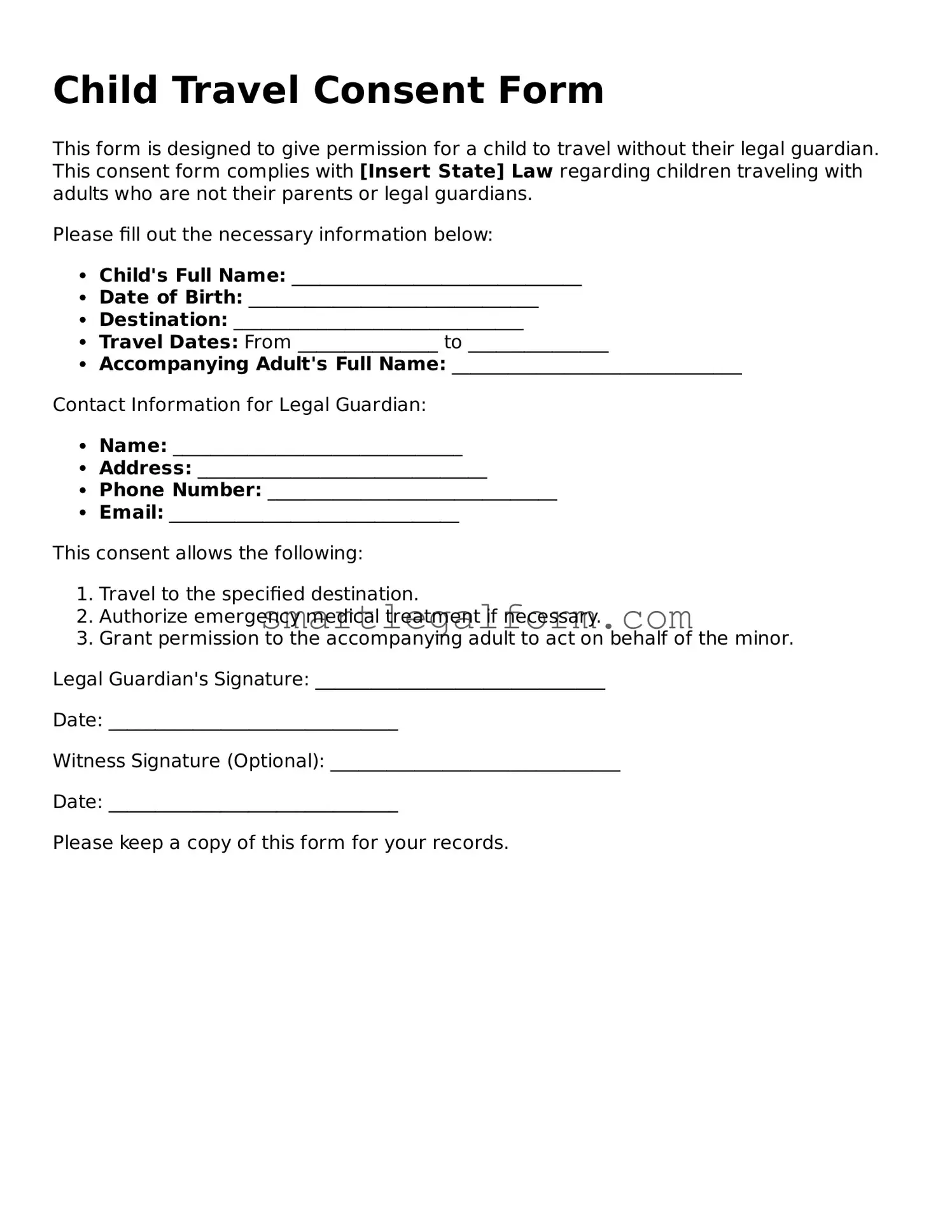When filling out the Child Travel Consent Form, individuals often overlook important details. One common mistake is failing to provide complete information about the child. This includes the child's full name, date of birth, and passport number. Incomplete information can lead to delays or even denial of travel.
Another frequent error is not obtaining the necessary signatures. Both parents or legal guardians must sign the form. If one parent is unavailable, a notarized letter of consent may be required. Neglecting to secure all required signatures can result in complications at the border.
People also tend to underestimate the importance of accurate travel details. Travelers should include the destination, travel dates, and the name of the adult accompanying the child. Omitting this information can create confusion for authorities and may hinder the travel process.
Additionally, many fail to check the expiration date of the consent form. It is crucial to ensure that the form is valid for the duration of the trip. An expired form can lead to serious issues when attempting to cross borders.
Some individuals mistakenly believe that a verbal agreement is sufficient. Written consent is essential for legal protection. Relying on a verbal agreement can leave both the child and accompanying adult vulnerable to legal challenges.
Inaccurate contact information is another common mistake. Providing up-to-date contact details for the parents or guardians is vital. If issues arise during travel, authorities need to reach the parents quickly.
People often forget to include emergency contact information. It is advisable to list someone who can be reached in case of an emergency. This extra layer of safety can be crucial during travel.
Another oversight involves not double-checking for errors. Simple typos or incorrect information can cause significant delays. Taking a moment to review the form can prevent potential problems.
Some travelers overlook local laws regarding child travel. Different countries may have specific requirements for minors traveling alone or with one parent. Familiarizing oneself with these regulations can help avoid unexpected issues at customs.
Finally, many individuals neglect to keep a copy of the completed form. Having a copy on hand can serve as proof of consent if questions arise during travel. It is a simple step that can save a lot of trouble later on.
